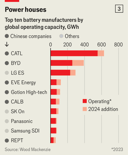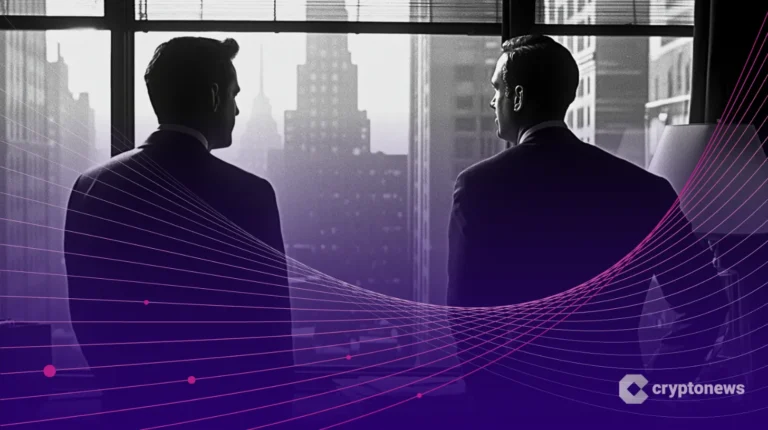
GoDaddy, a domain registration and web hosting company, started out during the dot-com bubble in 1997. Today, the company is the world’s largest domain registrar, with over 85 million domains registered, and more than 20 million customers across the globe.
Aman Bhutani took over as CEO in 2019, having previously spent nearly a decade at the travel tech company Expedia Inc., where he was chief technology officer from 2010 to 2015, and Brand Expedia Group president from 2015 to 2019. Before that, Bhutani held various technology roles at JPMorgan Chase and Co. and Washington Mutual, Inc.
“Like many people, I wasn’t aware of what GoDaddy had become. As I looked into it more, I became more and more impressed,” Bhutani says of his impression of the company before taking the helm.
GoDaddy aims to distinguish itself by marketing primarily to small and micro businesses, which comprise most of its customer base. In the latest sign of the company’s growth, GoDaddy joined the S&P 500 benchmark in June, progressing out of the S&P MidCap 400.
Like many in the tech sector, GoDaddy has since 2023 sought to use artificial intelligence tools to enhance both its client offerings and its internal operations. The company’s recently released GoDaddy Airo tool can guide customers in creating a website from scratch, writing copy and designing logos, and generating a host of content including custom ads and email campaigns. Internally, AI systems are being used for a wide range of tasks, including optimizing marketing spend and assisting customer support employees.
The company has faced some challenges. In recent years the company has been the target of repeated cyberattacks. It is currently facing antitrust litigation over alleged anti-competitive behavior, which the company declined to comment on.
Bhutani, who has held senior leadership roles in public companies for almost two decades and currently sits on the board of The New York Times Company, says he foregrounds “transparency, self awareness, discipline, humility, hunger, and responsibility” as norms that guide his work.
TIME spoke with Bhutani about what drives him, how the company is using AI, and its response to recent cybersecurity challenges.
This interview has been condensed and edited for clarity.
You’ve praised Serena Williams for her “addicted to winning” mentality—her hunger for success. Do you still feel ‘hungry’?
Oh, yeah, absolutely. I think without hunger, nothing works, especially for folks like me. It’s the internal hunger that drives you. Even in recruiting, whether it’s execs or line-level engineers or marketing folks, the number one thing we look for is hunger. Skills, experience—everything else is secondary.
People who are hungry overcome just about any obstacle. I was very lucky to have a fantastic education and work for great companies. I’m not discounting skill and experience. I think it’s fantastic. It’s just skill and experience without hunger is like a diamond without polish.
What are you personally hungry for? How has this shaped your career?
There is a philosophy that I subscribe to in terms of how I approach my life, which I used to just call discipline, but around 10 or 12 years ago somebody showed me the film Jiro Dreams of Sushi, and I realized the Japanese have been perfecting this art for hundreds of years, so I should just take their model. They call it ‘shokunin.’ It’s this idea that you’re committed to your craft and you want to make it better and better.
Once I stepped into leadership, I realized that, for leaders, being a senior leader in a public company is like going to the Olympics: there’s no bigger, better arena to compete in. At some point, many years ago, somebody asked me, “what do you want to be?” and I said, “well, I don’t know how I would get there, but if I could, I’d like to be the CEO of a public company.”
My path to that is ‘better every day’—the Shokunin model. You come in every day and you compete with yourself. Discipline is about the aggregation of small gains, about being critical, evaluating yourself, and having a test to know that you were better. Many people say “I was better,” but they don’t really break it down scientifically. They don’t measure it. I can tell you funny stories of things I measured for nine months about myself on an Excel sheet [such as how sending late-night emails impacted my mood] that installed serious awareness for me.
So it becomes about competing with yourself, and not with anyone else.
GoDaddy was recently included in the S&P 500. What contributed to that inclusion, and how do you think it will impact the company going forward?
It’s an amazing milestone for the company. They don’t inform you in advance or anything—you just learn one day that they’ve made that decision. My response to that was to go to the leadership team at GoDaddy and say, “look, a couple of you were here when the company went public, and that was a major milestone, for sure. But outside of that, this is a pretty major recognition of what GoDaddy is and can be in the future.”
It means different things to different people. People will talk about financial metrics: the size and scale of the market cap and the reliability of your earnings and all that. And of course, those things are important. But the thing that I impress upon the leadership is that it’s a recognition that GoDaddy is a company that is here to stay; that serves an important purpose in the world.
And that purpose is valued by its customers—a very large group of people. GoDaddy has 21 million paying customers. Not a lot of companies have 21 million paying customers. We make $200 approximately per customer per year. When I say that to most software companies you use, they’re like, “you make, what? How do you pay for the bills?” I say, “yeah, we are very careful.”
GoDaddy recently launched its own AI-powered tool, GoDaddy Airo. How are you using AI within the company—are you relying on third-parties, or developing models in-house?
The AI technology we use uses internal AI systems, but we also use third-party AI systems. We have what we call the GoDaddy software platform. At our investor day, we talked about this concept of “two transformations and an outcome.” Those two transformations being about evolving our software platform and doing evidence-based decision-making, and then the outcome being profitable growth for the company and return to shareholders.
But in that software platform sense, the way it works is that all our products are able to use our AI models using a single set of interfaces. One of those interfaces gives them access to a variety of external models. So we can ping OpenAI, or flip to the Microsoft version, or try Gemini, or do DALL-E 3, or whatever choice we want to make. We have our own model that runs in AWS [Amazon Web Services] that is secured: none of the data we push into that model goes out to anybody else. So teams are able to use all those different choices, but using one interface so it’s not hard for them to do it.
We see that as the right approach for GoDaddy, that it is a mix of our AI models where we have competitive advantage and relying on the large language models of big companies that have different expertise from us. We are not in the business of buying GPUs and creating the large language models ourselves. We’re in the business of taking technology and bending it, squeezing it, transforming it, so that it creates value for the micro-business, so that it creates value for our customer.
When people use AI, they’re like, “Oh, I got a prompt. I can put in anything, and I got a response back,” which could be a picture, music, or text. It’s great for generating content. When you build an advanced logo with GoDaddy, ultimately you’re using some text and an image, but it’s not about putting in a prompt and getting a response back. It’s about providing a guided experience to a non-technical person, giving them guardrails, not just from a security standpoint, but guardrails that help them be guided to the solution that they want, so that they actually create something that’s many times more powerful than what they think they could have created.
GoDaddy faced significant cybersecurity challenges between 2020 and 2023, when a sophisticated hacker group was able to repeatedly steal passwords, and in one instance to install malware on your servers. What have you learned from those breaches?
Securing our customers and our employees and their data continues to be a top priority for us—it has been for the last multiple years. It’s something that I engage with on a weekly basis, because the threat landscape continues to evolve. And you’re right, AI can create a lot of new threats as well. So we’re absolutely laser focused on it.
We also feel very good about the progress we’ve made. Of course, you don’t have a lot of the internal information, but even if you look at some of the external information, you’ll find that we are able to be very sophisticated about understanding attacks, and very quick to resolve and react if needed. We have some pretty important assets, so we get some attention on this topic from attackers.
You’re one of 13 members on the board of the New York Times Company. How did you end up there, and how does leadership on a board differ from leadership of a company?
It’s a fantastic experience for me to be on the New York Times board, and I’m just constantly honored to be there. My previous boss was on that board, and when he left there was an opening. I was one of the people he recommended, and I ended up getting it.
I was interested in the New York Times board because it seemed to me that the New York Times influences some of the best minds in the world, and I thought it would be amazing to sit in a room and learn more about the business that makes that happen. The board’s responsibility is business, not the newsroom, which is a separate responsibility in their governance structure.
So I was very attracted to it. As a board member, you really hone the skills of absorbing a lot of information at certain times of the year and learning to understand how to ask the important questions and steer away from the operations. Your job is not to catch people out. Your job is to—of course, to meet your fiduciary responsibility, that’s primary—but also to be an advisor, somebody who brings their experience and their knowledge and skills to the table.
That’s different from operating a business every day, where you’re very deeply involved and you know every bit of nuance. And interestingly, it’s one of those things where sometimes, when you are super deeply involved, even the best of us can have trouble seeing the forest from the trees.
As a board member, you get to really refine that skill of seeing the bigger picture—once in a while, diving deep if you have to, but broadly, being able to see the bigger picture, while meeting your fiduciary responsibility and having continuation over time.
There were many board meetings, initially, where I spoke very little and I listened a lot, and I did that because of advice I received years ago from one of the Expedia board members, Skip Battle. I sat at dinner with him once when I was president [of Expedia], and I asked him for advice. Skip didn’t speak a lot at the board meetings. He’s one of those people, who, if he spoke, everybody would be quiet. And he said two things to me. He said, “I like your ears to mouth ratio,” and “I like your thinking to talking ratio. So keep it that way.”
I tell it now to my kids—‘thinking to talking ratio’—what a beautifully simple ratio. Your ears to your mouth. How do you want it to be?

















